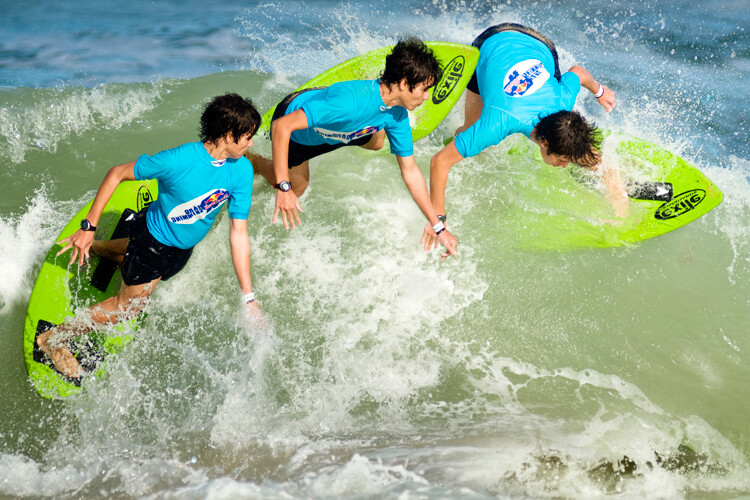Learn how to skimboard with a step-by-step tutorial that will quickly help you master wave and flatland skimming.
"I don't need to learn how to skimboard - it's easy, just run and jump right..." I hear lots of people say this before they even try skimming.
"Ok, go ahead and do it then," I say as I pass them my board.
This is my favorite part - getting to laugh as nearly every person bails.
Yes, I am slightly sadistic, but aren't we all a little bit?.
It's all in good fun, and not everyone falls on their first run, but most do. Bailing is just part of learning how to skimboard.
I used to go to work every Monday morning, limping just a little. But if you're not banged or bruised a bit when first starting, you're not trying hard enough.
Sure, it's easier than some other sports, but you still fall, and it still hurts.
Especially once you start getting into tricks or riding rails, but we will get into that later - baby steps, little shredder, baby steps.
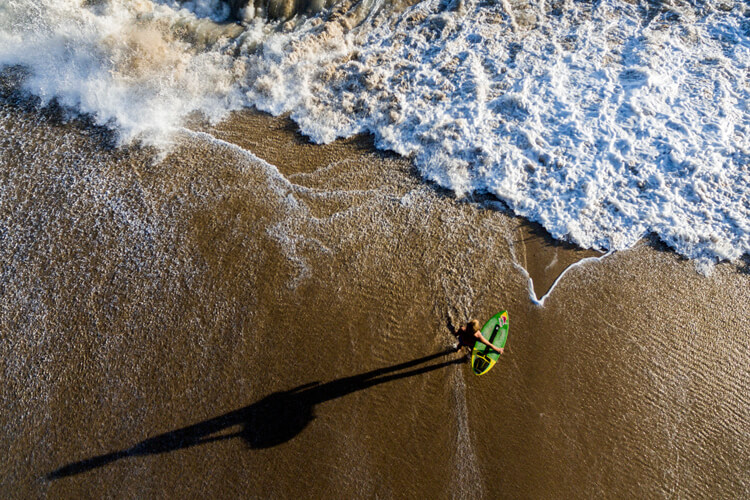
Doing It Right
This guide will teach you how to skimboard quickly, easily, and with - hopefully - as few bails as possible.
Skimboarding - or skimming as we call it - doesn't have to be all about eating sand and water at first.
I've had years of learning how to skimboard the hard way and then later, re-learning from more advanced friends and pros.
There really is a "right" way and a "wrong" way to skim.
If you learn how to skimboard the right way first, you will fall less and won't waste time correcting bad habits.
I've taught lots of people how to skimboard. These steps have proven to be the simplest way to get you skimming quickly and properly.
It may seem like a slow way to learn how to skimboard at first, but trust me - this will work.
Whether you are just trying skimming for kicks or a stoked little grommet, if you follow these steps, you will be enjoying longer rides and fewer bails much sooner than any other way.
1. Start on Sand or Grass
The best way to learn how to skimboard is by perfecting your run and landing.
If you get it right, the board should still glide a little, even on the sand or grass, assuming it's not too sticky or muddy.
Direction
- Drop the skimboard on the ground and leave it there;
- Step back and run to the board from directly behind it - not from the side;
- Running directly from behind will transfer the forward motion, well, forward, which is, of course, the desired effect;
- Running from the side will push the board sideways, and you will lose both momentum and control;
Running
It doesn't matter which foot is your lead foot, whether you are goofy (right foot front) or regular (left foot first).
If you are riding flatland, it doesn't matter which foot you land on - front or back foot.
If you are riding waves, it's better to land on your back foot first, but it's not critical.
The reason is to keep the nose of the board from dipping into the water when you land.
It does matter how you land. Perfecting your landing is the most critical aspect as it affects everything else.
- As mentioned above, run from directly behind the skimboard, and when you come to the board, keep running directly onto it;
- Do not jump onto it. If you jump onto it, the board will go down into the water and sand - not forward. Sure, you may still go forward a bit, but not very far or very fast. Your ride will be short and uncontrolled at best;
- Instead, maintain the forward motion by just running naturally onto the board. This will continue the forward motion and give you the most momentum with the least effort;
- This practice of running onto the board is usually what takes most people the longest to get right. It takes time to get the timing of the motion of the board in the water with the pace of your stride;
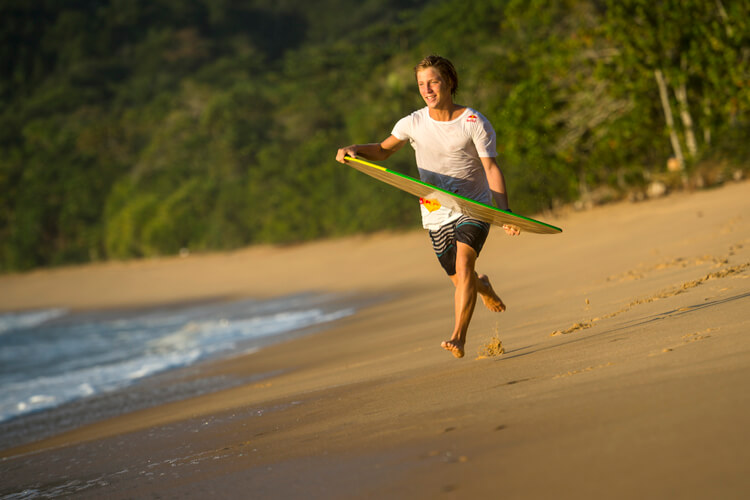
Foot Placement
- Both feet should be facing the side of the board;
- You can also angle your front foot slightly towards the tip of the board, but not too much. Your stance is similar to that of a snowboard;
- Keep your feet centered and towards the back of the board with each foot closely lined up with your shoulders;
- Pop-a-squat: Bend a little at the knees to facilitate movement;
- By placing yourself closer towards the back, you will have more control of the board, as your back foot is the one that controls it and is the one that starts most tricks such as shove-its and ollies;
Balance
When you land, as I said, it doesn't matter as much if you land with your back foot first or your front, although, if you are wave skimming, it is better to land back foot first.
Either way, as long as you have the first two steps right, the momentum will push the board forward.
- Keep your knees loose and bent in a slight crouch;
- Don't lock your legs straight. Locking your legs will push the board down, forfeiting all control, and can also lead to injury. By keeping your knees slightly bent, you have complete control as your legs are able to respond with the board through the waves, and you decide where the board goes;
- Keep your weight centered over your feet - don't lean too much to the front or back;
- Lean slightly more towards your back foot - just a little. If you put too much weight on your front foot, you will nose dive into the water/sand. If you put too much on your back, however, you will slow your board;
This balance, like all new things, will take lots of time and practice. Soon it will become second nature.
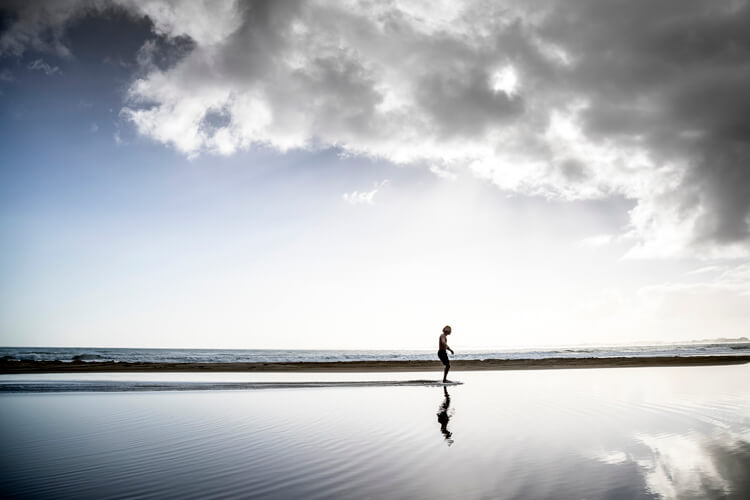
2. Skim's Up
You have mastered the technique on the training grounds. Now it's time to learn how to skimboard in the real world - the skim zone.
Start Slowly
I know the urge is to get out, run fast and ride, but don't do this yet, unless you really are a glutton for pain.
- Find a calm place on the shoreline where there is a long line with a thin layer of smooth water;
- Just a few inches. Too deep, and you will sink (you need lots of speed to go into deeper waters). Too little, and you will stick to the sand;
- Drop the board in the water with the nose facing the direction you want to go;
- Now practice all the steps (above) that you learned first on the sand or grass. Be prepared to re-learn all those steps because this time, the board will move on you - and quickly;
Run and Chase
Now you have the basics of how to skimboard - you are ready to start actually skimming.
- Holding the skimboard in both hands with the nose slightly upwards, you can start running - slowly;
- Taking a few steps, throw the board just slightly in front of you and run onto it as practiced before;
- Now you're skimming for real;
- Don't throw the board so far in front of you that you need to catch up to it. By the time you catch up, it will have lost all its momentum, and you will have expended too much energy. Also, you give up a lot of control by doing this as the waves control the board more as it slows down, and who knows where it will be by the time you catch up to it;
- You should only be taking a few quick steps before running onto the board;
- Once you get this mastered, there are quicker and more efficient ways to get on, but for now, just focus on getting your running, landing, and balance right;
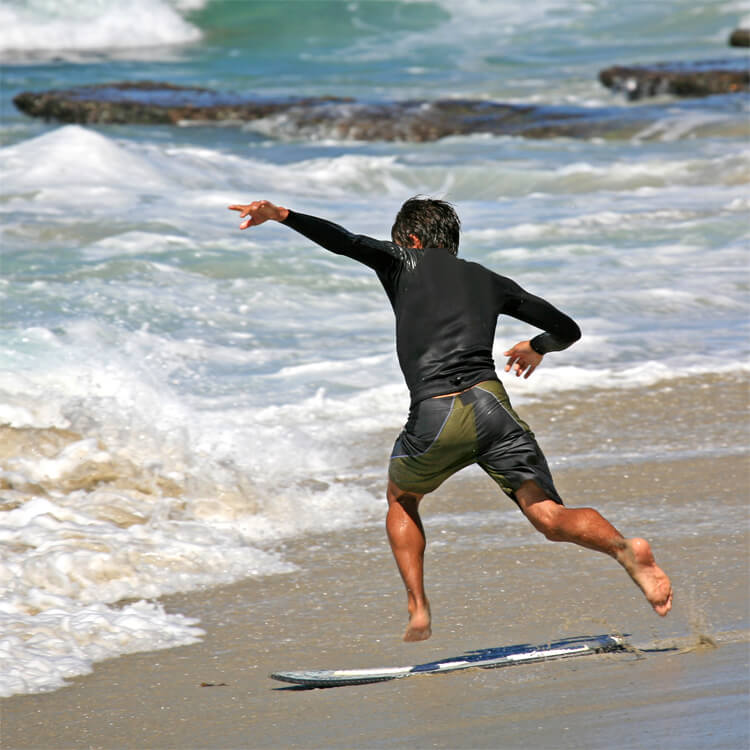
Give It All You've Got
The faster you run, the faster and farther you will go.
You will be able to skim through deeper water, and you will have more energy to pull off some sweet tricks - eventually.
Controlling the Skimboard
A combination of your back foot and your torso is what controls the board.
- Wherever your lead shoulder is facing is where you are automatically going to go;
- Plus, you can control turns and move the board sideways using your back foot;
Here's an extra tip.
Once you're in the skim zone, there is a certain skim etiquette that should be respected, not only for your safety but also, so you don't piss off other skimmers.
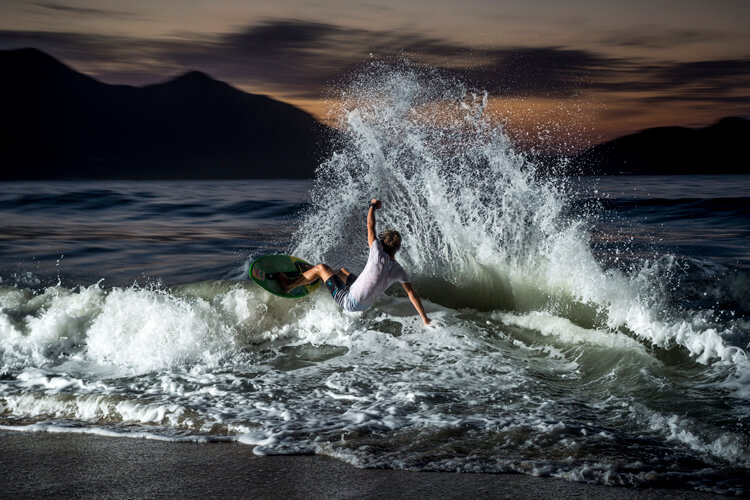
3. Reading the Skim Lines or Waves
Timing is critical.
Skimming is possible in almost any condition, but you still need to learn to read the skim lines (flatland skimming) or waves (wave skimming).
Flatland
This is pretty easy to start.
All you need is a few inches of water, and fairly smooth sand (no deep ripples, rocks, or shells), and you can go almost any time.
- Wait for the water to swell onto the beach. As it does, it leaves you with a nice smooth line to skim on;
- It's good practice to watch for a few swells to see how far it comes in and how low the levels go on the way back out;
- There will also be higher and lower swell periods in between medium ones;
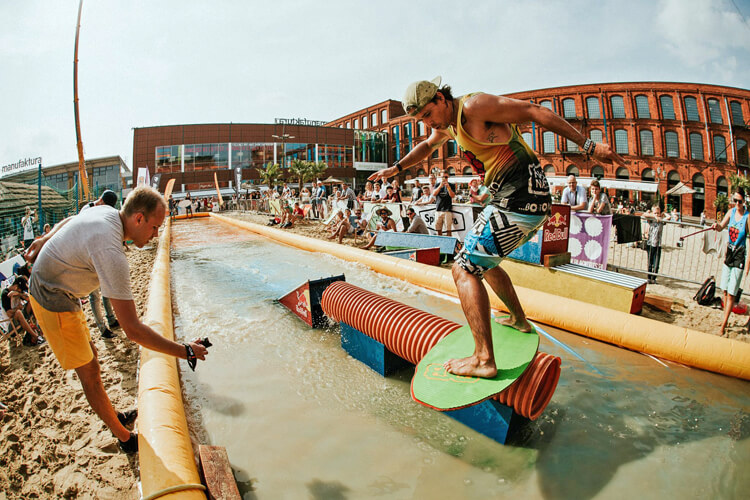
Waves
This is a bit trickier.
As with surfing, you will need to watch the swell pattern.
- The goal is to start running as you see a wave coming in before it breaks, so you can ride it out as it breaks - just like surfing;
- Usually, you'll start as you see the wave you want just beginning to emerge;
- Running fast and dropping quickly, you will usually skim through the previous wave that has already broken, slightly lifting the nose of the board to "hop" over it - but don't hop too much. Your focus is on going forward fast to catch the wave that's on its way;
- Once you get to the wave, move with it, skimming in the direction it's going, or you can use it to launch yourself into the air and flip or "pop" off it;
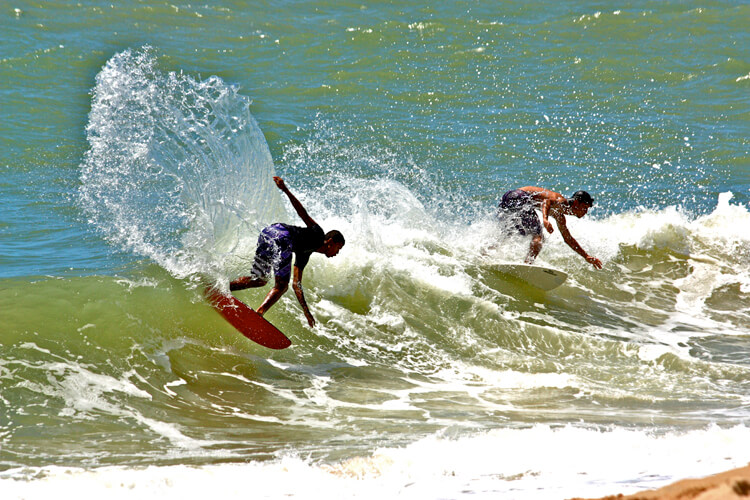
These are the basics of how to skimboard.
Keep practicing these steps and check out these skimboard tips, and you will be skimming like a pro in no time.
Once you have these nailed, it's time to learn a few easy tricks and move on to more advanced techniques.
Words by Nicole Rigler | Skimboarder
